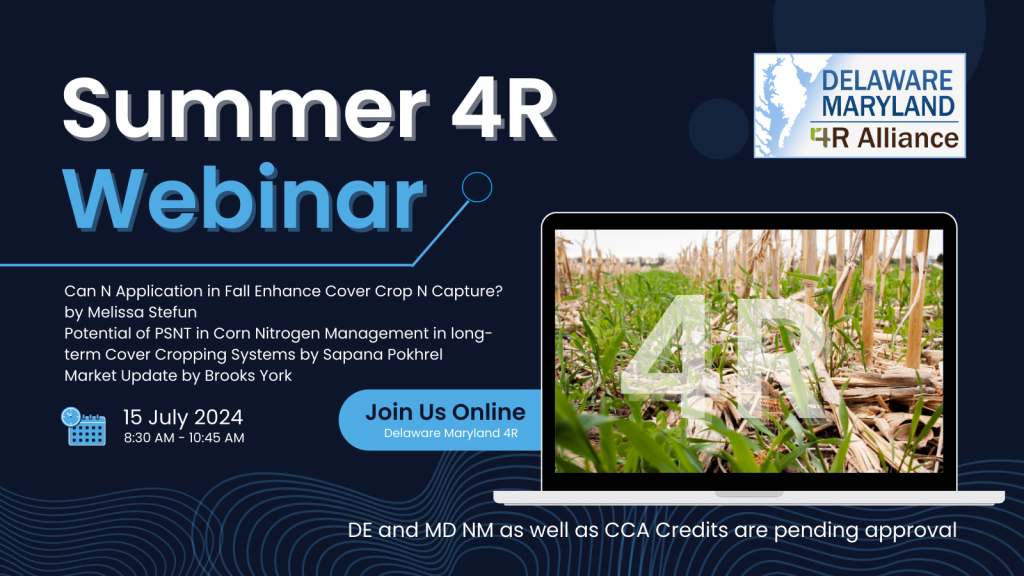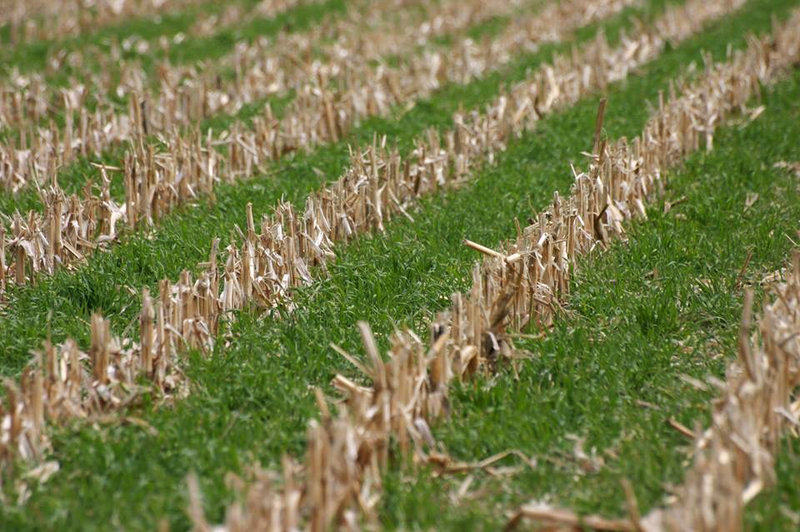Covering Cover Crop, Nitrogen, and Markets – Listen During the 4R Summer Webinar
Chester, Maryland (July 2, 2024) – The Delaware Maryland 4R Alliance is hosting a summer 4R webinar. Join us on July 15th at 8:30 AM for a wonderful line-up. Registration is free and available here.
The morning webinar will provide Nutrient Management, Conservation Planner, and Certified Crop Adviser credits for all attendees. The credits are currently pending and will be posted on our website once finalized.

The 4R Alliance is excited to welcome Melissa Stefun, a graduate student member of the soil quality laboratory at the University of Maryland for a presentation on N fall application on cover crops. Then Sapana Pokhrel, a post-doctoral researcher at the University of Delaware, will be talking about the potential of PSNT in corn nitrogen management in long-term cover cropping systems. Lastly, Brooks York with AgriSompo will talk about market conditions, crop insurance, and future treds the industry might see.
The Delaware Maryland 4R Alliance is a collaboration between agribusinesses, farmers, government agencies, conservation groups and scientists. Working to ensure that every nutrient application on Delaware and Maryland farms is consistent with the 4Rs – the right nutrient source, applied at the right rate, at the right time, and in the right place. The alliance is focused on increasing implementation of 4R practices to benefit the economic, environmental, and social well-being of our region and our farmers. Learn more about the 4R alliance at 4RMidAtlantic.com.
Register today online at https://bit.ly/4RSummerWebinar24.
